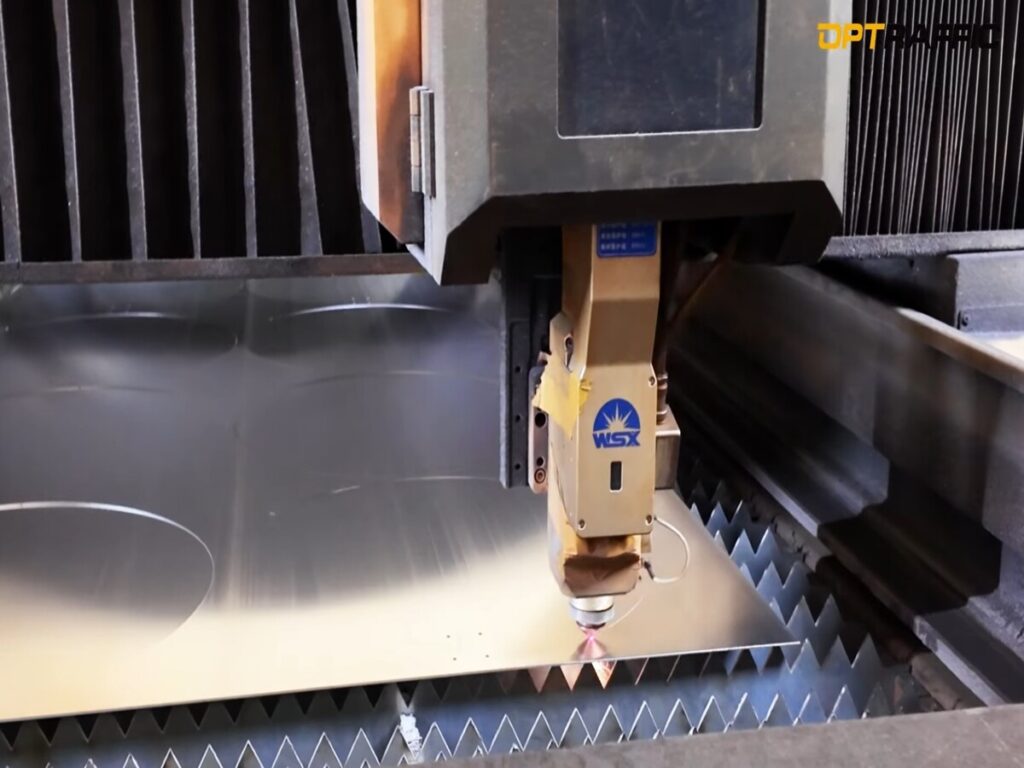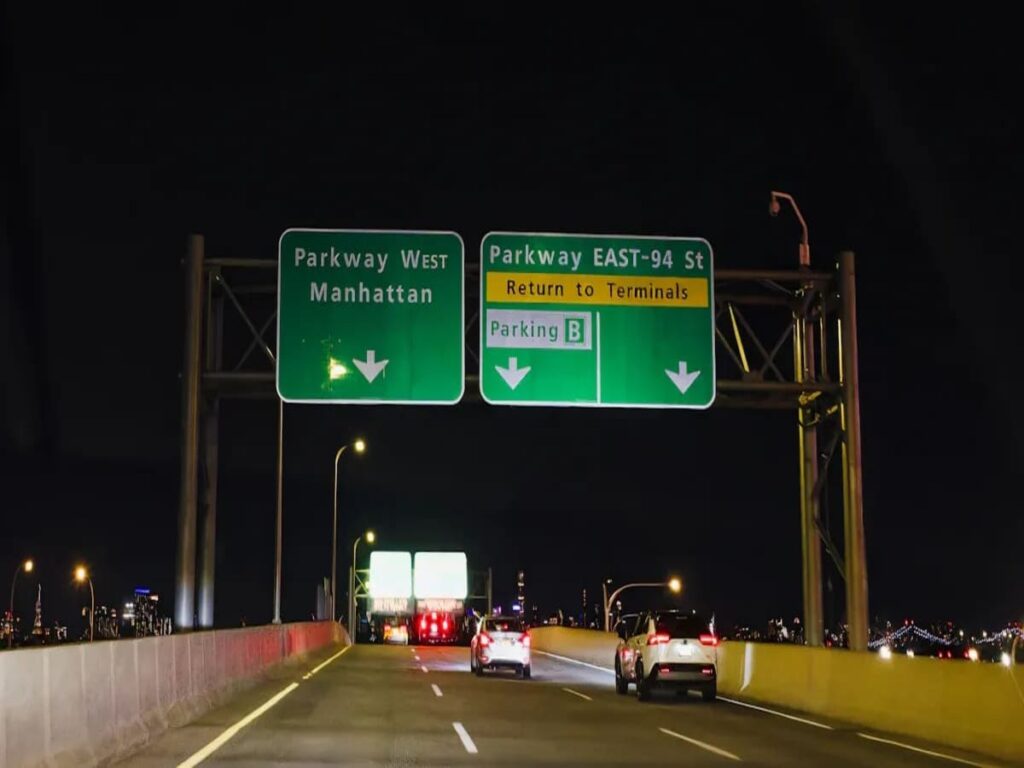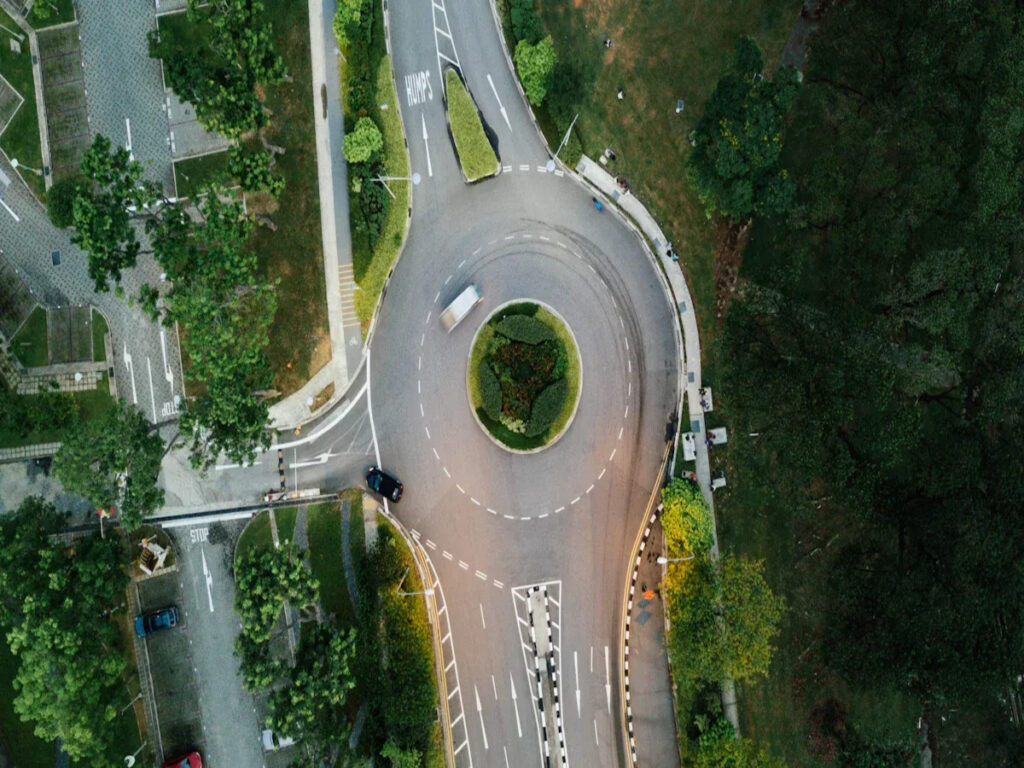
Les ronds-points et les barrières à la sécurité de la circulation ont transformé le fonctionnement des routes aujourd'hui. Ils contribuent à rendre les routes plus sûres et à améliorer la fluidité du trafic. Les ronds-points réduisent la vitesse des véhicules aux intersections, ce qui réduit le risque d'accident. Des études indiquent que moins d'accidents mortels ou corporels se produisent aux ronds-points. Dans 2010, les accidents résultant d’une sortie de route ont diminué de 3.9%, tandis que les accidents aux intersections ont diminué 7.1%. Les barrières de sécurité routière jouent également un rôle crucial pour sauver des vies en guidant les véhicules à travers les zones de construction.. Ces outils fonctionnent en tandem pour améliorer la sécurité de tous les voyageurs.
Principaux à retenir
- Les ronds-points réduisent les risques d'accident en ralentissant les voitures, Garder les routes plus en sécurité.
- Les barrières de circulation assurent la sécurité des conducteurs et des marcheurs en arrêtant les accidents graves.
- L'ajout de ronds-points aide la circulation à mieux circuler, réduire les temps d'attente pour les conducteurs.
- Les ronds-points et les barrières rendent les routes plus sûres et réduisent la pollution.
- Les nouvelles technologies peuvent rendre les ronds-points et les barrières encore plus sûrs et plus rapides.
Avantages des ronds-points pour des routes plus sûres
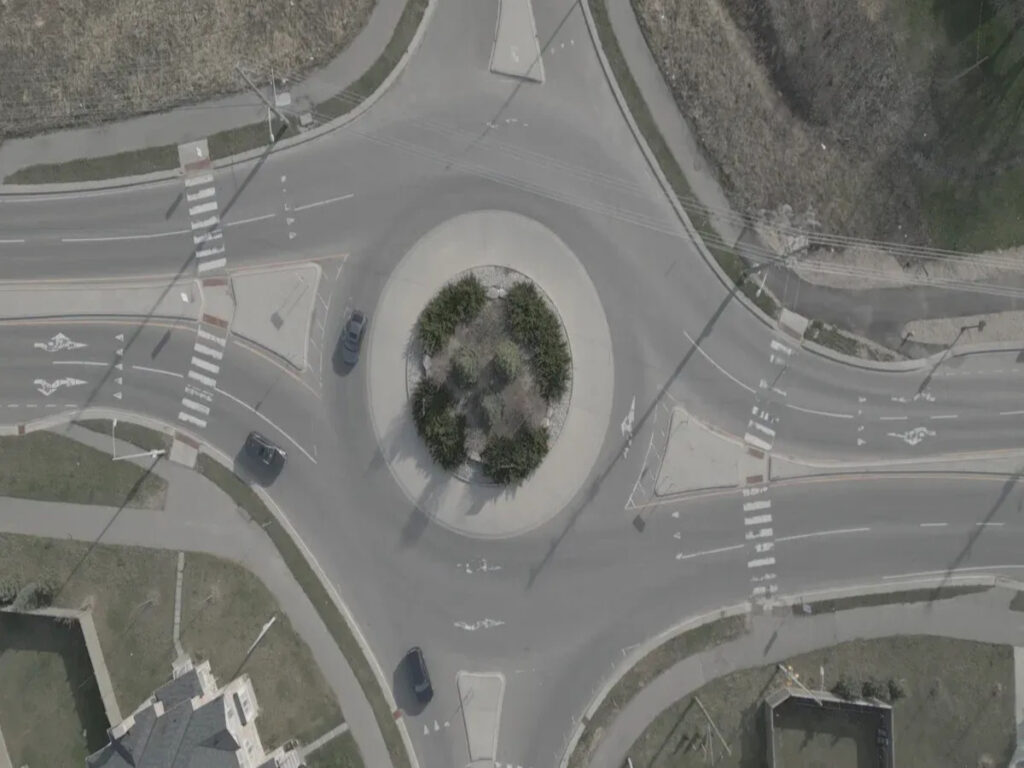
Comment les ronds-points réduisent les accidents
Les ronds-points rendent les routes plus sûres en réduisant les risques d'accidents graves. Contrairement aux intersections régulières, les ronds-points s'arrêtent de plein fouet et le T-bone s'écrase, qui sont très dangereux. Leur conception oblige les voitures à ralentir en entrant et en traversant. Des vitesses plus lentes signifient des accidents moins graves, Garder tout le monde plus en sécurité.
Des études montrent une forte baisse des accidents après le remplacement des ronds-points. Par exemple:
| Étude | Moins de blessures se bloquent | Moins d'accidents totaux |
|---|---|---|
| Retting et coll., 2001; Eisenman et coll., 2004; Rodegerdts et coll., 2007 | 72%-80% | 35%-47% |
| Isebrands & Poinçonner, 2012 | 85% | 62% |
| Rodegerdts et coll., 2010 | 25%-87% | 36%-61% |
La recherche montre également que le changement 10% des États-Unis. les intersections vers les ronds-points auraient pu s'arrêter à environ 47,000 s'écrase dans 2022. Cela comprend 289 accidents mortels et plus 31,000 accidents avec blessures. Ces chiffres prouvent à quel point les ronds-points sont importants pour sauver des vies et réduire les accidents..
Impact des ronds-points sur la fluidité du trafic et la congestion
Les ronds-points ne rendent pas seulement les routes plus sûres, ils facilitent également la circulation.. Contrairement aux feux de signalisation, les ronds-points permettent aux voitures de circuler sans attendre le feu vert. Cette conception réduit les retards et maintient la fluidité du trafic, même pendant les périodes de pointe.
Une étude à Richfield, Minnesota, a montré comment les ronds-points réduisent les embouteillages. Ils ont remplacé les feux rouges par des ronds-points et ajouté des sentiers pour les marcheurs., motard, et les bus. Les résultats ont montré moins de retards et un trafic plus fluide. En supprimant le modèle stop-and-go, les ronds-points rendent la circulation plus efficace.
Les ronds-points évitent également les goulots d'étranglement en permettant aux voitures de circuler régulièrement.. Les voitures entrant dans le rond-point attendent celles qui sont déjà à l'intérieur, créer un trafic fluide et prévisible. Cette conception évite les embouteillages et maintient la fluidité du trafic, Même dans les zones bondées.
Avantages environnementaux des ronds-points
Les ronds-points sont meilleurs pour l'environnement car ils réduisent les émissions des voitures. Aux feux rouges, les voitures restent souvent inactives, gaspiller du carburant et polluer l’air. Les ronds-points font circuler les voitures, ils passent donc moins de temps au ralenti et émettent moins d'émissions.
Même si la recherche continue de croître, des études suggèrent que les ronds-points aident l'environnement. Ils économisent du carburant et réduisent les gaz à effet de serre en réduisant les retards et en améliorant la fluidité du trafic.. Cela en fait un choix plus écologique pour les routes d’aujourd’hui.
Les ronds-points incluent également souvent des plantes et des espaces verts dans leur conception.. Ces caractéristiques rendent la région plus agréable et aident la faune locale. En alliant sécurité, améliorations du trafic, et avantages environnementaux, les ronds-points sont un choix judicieux pour les routes modernes.
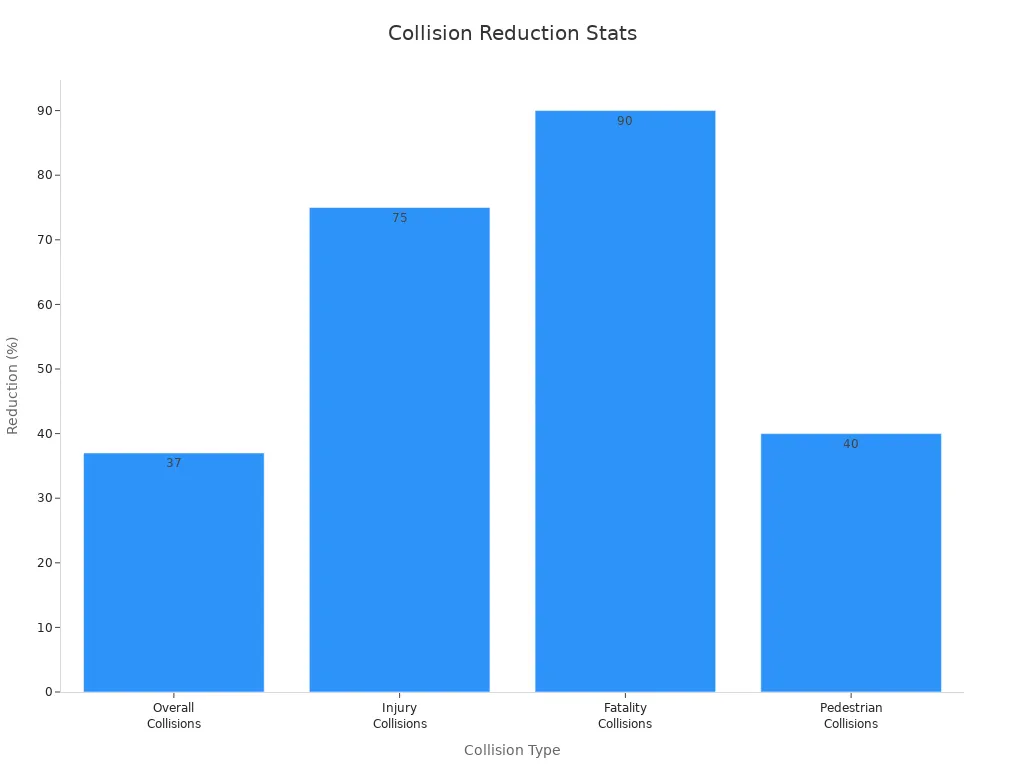
Les ronds-points sont un excellent moyen de rendre les routes plus sûres, réduire le trafic, et aider l'environnement. Ils réduisent les accidents, Améliorer le trafic, et réduire les émissions, ce qui en fait un élément clé des systèmes routiers d’aujourd’hui.
Le rôle des barrières de sécurité routière dans la sécurité routière
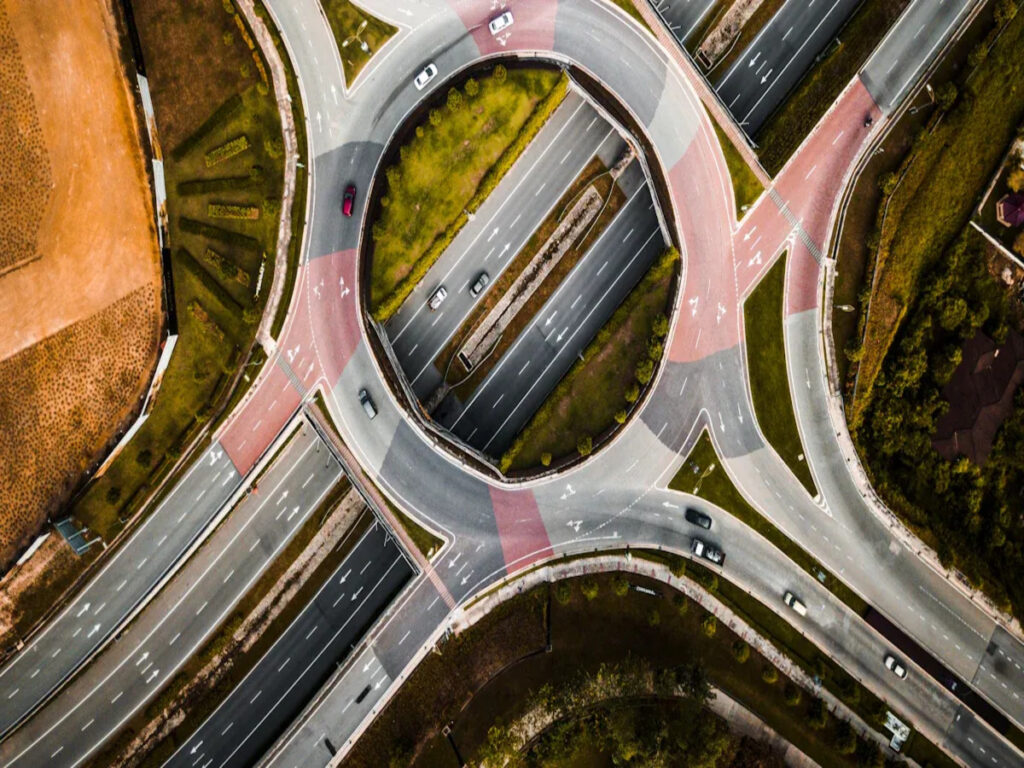
Les barrières de sécurité routière contribuent à rendre les routes plus sûres pour tous. Ils protègent les conducteurs, passagers, et les piétons en réduisant la gravité des accidents. Ces barrières guident également les véhicules en toute sécurité dans les zones à risque. Différents types de barrières sont fabriqués pour des besoins de sécurité spécifiques.
Types de barrières de sécurité routière et leurs fonctions
Les barrières de sécurité routière résolvent divers problèmes de sécurité routière. Chaque type a une tâche unique pour assurer la sécurité des routes. Voici les principaux types:
- Barrières en béton: Ces barrières solides sont utilisées sur les autoroutes et les ponts. Ils empêchent les voitures de passer à la circulation venant en sens inverse, prévenir les collisions frontales.
- Garde-corps: Ces barrières flexibles se placent dans les courbes et les pentes raides. Ils absorbent l’énergie d’un accident et repoussent les véhicules sur la route.
- Barrières médianes par câble: Ces barrières utilisent des câbles en acier sur des poteaux. Ils empêchent les voitures de traverser les terre-pleins vers des voies opposées.
- Coussins de crash: Ces barrières sont placées à proximité de poteaux ou de supports de pont. Ils absorbent l'impact d'une collision, protéger les personnes dans le véhicule.
Le Administration des routes fédérales (Fhwa) barrières de câbles étudiées avec bandes antibruit. Cette combinaison réduit les blessures et les accidents mortels tout en étant rentable.
| Aspect | Détails |
|---|---|
| Titre | Évaluation de la sécurité des barrières médianes en câbles en combinaison avec des bandes rugueuses sur les routes divisées |
| Source | Administration des routes fédérales (Fhwa) |
| Se concentrer | Examine la sécurité des barrières à câbles avec bandes antibruit |
| Résultats | Moins de blessés et d’accidents mortels; solution de sécurité économique |
Comment les barrières de sécurité routière préviennent les accidents et protègent des vies
Les barrières de sécurité routière sauvent des vies en empêchant les voitures de quitter la route. Ils agissent comme des boucliers, réduire les risques d'accidents graves. Moins de points de conflit signifie moins d’accidents.
Des études montrent que les barrières réduisent les risques de blessures lors d'accidents:
- Les barrières en béton réduisent les risques de blessures 39%.
- Les garde-corps réduisent les risques de blessures en 65%.
- Les barrières de câbles offrent la meilleure protection, réduire les risques de blessures en 78-85%.
Les barrières à câbles réduisent également les accidents mortels. Bien qu'ils puissent légèrement augmenter le nombre d'accidents, ils ont évité des blessures mortelles en 20% et des blessures corporelles causées par 10%. Ces avantages rendent les barrières essentielles pour les routes dangereuses.
Exemples de mise en œuvre efficace de barrières de sécurité routière
Des exemples concrets montrent comment les barrières améliorent la sécurité. Départements d'État des transports (Pointes) utilisez-les pour réduire les accidents et sauver des vies.
| État POINT | Détails de la mise en œuvre |
|---|---|
| POINT DU Minnesota | Ajout de barrières de câbles à 900 des kilomètres d'autoroutes divisées. |
| POINT du Nebraska | Travaille avec des groupes locaux pour installer des mesures de sécurité comme des coussins de sécurité. |
| POINT du Nevada | Adopté 26 de 28 Pratiques de sécurité de la FHWA, incluant SafetyEdge en standard. |
Les barrières à câbles du Minnesota ont considérablement réduit les accidents mortels et blessés. Le Nebraska et le Nevada utilisent également des garde-corps et des coussins de sécurité pour améliorer la sécurité.
Les barrières de sécurité routière sont plus que de simples structures. Ils montrent leur engagement à sauver des vies et à rendre les routes plus sûres. Connaître leurs types, usages, et des exemples nous aident à voir leur importance dans la sécurité routière.
Utilisations concrètes des ronds-points et des barrières de sécurité routière
Exemples de projets de ronds-points réussis
Les projets de ronds-points montrent comment ils améliorent la circulation et la sécurité. Les villes bénéficient de moins d’accidents, une meilleure fluidité du trafic, et moins de pollution. Les ronds-points réduisent le nombre d'accidents en réduisant les points de conflit et en assurant une circulation fluide. Ils réduisent également les temps d'attente et les files d'attente, améliorer la qualité du service routier.
| Métrique | Ce que cela signifie |
|---|---|
| Performances de sécurité | Les ronds-points rendent les routes plus sûres en réduisant les risques d'accident et en améliorant la fluidité. |
| Impact environnemental | Ils réduisent la consommation de carburant et la pollution en réduisant les temps d'inactivité. |
| Efficacité du trafic | Meilleure fluidité du trafic avec des délais et des lignes plus courts. |
| Fréquence des accidents | Les ronds-points contribuent à réduire le nombre d'accidents. |
Ces faits montrent comment les ronds-points rendent les routes plus sûres et plus efficaces. L'ajout des barrières OPTRAFFIC rend cela encore meilleur en guidant les voitures en toute sécurité et en améliorant la navigation..
Comment les ronds-points et les barrières fonctionnent ensemble
Les ronds-points et les barrières rendent la circulation plus fluide et plus sûre. Des études montrent qu'ils réduisent le temps de trajet, économiser du carburant, et moins de pollution. Des barrières guident les voitures dans les ronds-points, arrêter les embouteillages et maintenir la circulation fluide.
| Paramètre | Ce qu'il montre |
|---|---|
| Nombre total de véhicules dans les files d'attente | Compte les voitures en attente dans la circulation. |
| Temps de trajet | Mesure la durée des trajets. |
| Consommation de carburant | Vérifie la quantité de carburant utilisée. |
| Émission de CO2 | Mesure la pollution des voitures. |
| Nombre d'accidents attendu | Prédit les risques d'accident en fonction du trafic. |
| Géométrie du rond-point | Examine comment les formes des ronds-points affectent la sécurité et la fluidité. |
| Type de barrière de sécurité routière | Étudie différents types de barrières. |
| Typologie des véhicules | Inclut les voitures ordinaires et autonomes dans les tests. |
Utiliser les ronds-points avec Les barrières d’OPTRAFFIC crée plus de sécurité, des routes plus douces. Ce travail d'équipe réduit les accidents, pollution, et des problèmes de circulation.
Leçons des projets routiers
Les projets routiers nous apprennent à rendre les routes plus sûres et plus rapides. Résoudre les problèmes de trafic, intempéries, et les zones de travaux améliorent les autoroutes. Moins de trafic fait gagner du temps, carburant, et réduit la pollution.
- Un meilleur temps de trajet signifie moins d'attente et moins de retards.
- Des passages frontaliers plus fluides réduisent les coûts et facilitent le commerce.
- Les chauffeurs et les camionneurs apprécient des temps de trajet fiables, il est important d’éviter les retards.
Ces leçons montrent pourquoi les ronds-points et les barrières sont essentiels pour de meilleures routes. Ensemble, ils rendent la conduite plus sûre, plus rapide, Et mieux pour l'environnement.
L’avenir de la sécurité routière et de la fluidité du trafic
Solutions de circulation intelligentes pour les ronds-points
La technologie intelligente change le fonctionnement des ronds-points. Cela les rend plus sûrs et plus rapides. Des outils tels que les capteurs IoT et les feux de signalisation intelligents aident la circulation à mieux circuler. Ces systèmes s'adaptent rapidement pour réduire les retards et maintenir les voitures en mouvement.. Par exemple, les lumières intelligentes changent en fonction du trafic, aider les voitures et les gens à traverser en toute sécurité.
Au Carmel, Indiana, sur 120 les ronds-points ont remplacé les intersections régulières. Ce changement a réduit les accidents alors même que la ville était devenue trois fois plus grande.. Outils intelligents, comme de meilleurs panneaux et détecteurs de passage à niveau, rendu les routes plus sûres pour tout le monde. Ces mises à jour montrent comment la technologie améliore la sécurité et l'utilisation des ronds-points.
Innovations dans les barrières de sécurité routière
Les barrières de circulation s'améliorent pour faire face aux nouveaux défis routiers. Les nouveaux designs sont plus forts, plus flexible, et dure plus longtemps. Par exemple, les barrières à câbles utilisent désormais de meilleurs matériaux pour absorber les collisions. Des barrières intelligentes dotées de capteurs peuvent contrôler la circulation et avertir les conducteurs des dangers.
Nouvelle technologie comme V2x permet aux voitures et aux barrières de partager des informations. Cela permet d'avertir les conducteurs des risques et d'éviter les accidents.. En mélangeant d'anciens outils de sécurité avec de nouvelles technologies, les barrières protègent désormais les routes mieux que jamais.
Le rôle de l’IA et de l’IoT dans l’optimisation de la sécurité routière
IA et IoT rendent les routes plus sûres en gérant la circulation plus intelligemment. Les systèmes d'IA utilisent les données des caméras et des capteurs pour détecter rapidement les accidents. Cette action rapide réduit les délais d’intervention d’urgence et évite davantage d’accidents. Par exemple, L'IA peut modifier les feux de circulation pour réduire les embouteillages et améliorer la fluidité.
Les villes utilisant l’IA et l’IoT ont connu 25 à 35 % d’accidents en moins. Ces systèmes surveillent également les routes de près et alertent les travailleurs des problèmes.. L'utilisation de cette technologie crée des routes plus sûres, moins de retards, et une circulation plus fluide pour tous.
Les ronds-points et les barrières de sécurité contribuent à rendre les routes plus sûres pour tous. Ils réduisent les risques de crash, Améliorer le trafic, et soutenir de meilleures conceptions de routes. Les ronds-points peuvent gérer 50% plus de trafic que les intersections régulières. Ils ont également réduit les accidents mortels en 90% et les blessures par 75%. Les barrières de sécurité protègent les personnes en arrêtant les accidents graves. Ensemble, ils rendent les routes plus sûres et plus faciles à utiliser.
Vous ferez face à des attentes plus courtes et une conduite plus fluide. Par exemple, le remplacement des feux rouges par des ronds-points réduit les retards de plus 70%. Moins de voitures au ralenti signifie aussi moins de pollution, avec une consommation de carburant en baisse 10%. Ces changements montrent pourquoi les ronds-points et les barrières sont importants pour un meilleur transport.
FAQ
Pourquoi les ronds-points sont-ils plus sûrs que les intersections ordinaires?
Les ronds-points empêchent les accidents frontaux et les T-bones de se produire. Leur forme ronde fait ralentir les voitures, donc les accidents sont moins nocifs. Il y a également moins d'endroits où des accidents peuvent survenir. Cela rend les ronds-points plus sûrs pour les automobilistes et les piétons.. 🚗👣
Comment les barrières de sécurité routière assurent-elles la sécurité des conducteurs?
Les barrières de circulation agissent comme des boucliers pour protéger les conducteurs. Ils empêchent les voitures de quitter la route ou d'emprunter d'autres voies. Par exemple, les garde-corps absorbent l'impact de l'accident et repoussent les voitures sur la route. Ces barrières rendent les accidents moins graves et sauvent des vies dans les endroits à risque.
Les ronds-points peuvent-ils aider à réduire les embouteillages?
Oui! Les ronds-points permettent aux voitures de circuler sans les arrêts et départs des feux rouges. Les voitures n’ont pas besoin d’attendre le feu vert, même pendant les périodes de pointe. Cela signifie des délais plus courts et des trajets plus rapides. Vous passerez plus de temps à conduire et moins de temps à attendre. 🚦➡️
Les ronds-points sont-ils bons pour l'environnement?
Les ronds-points aident l'environnement en réduisant les émissions des voitures. Les voitures ne tournent pas autant au ralenti, ils consomment donc moins de carburant et polluent moins. De nombreux ronds-points ont aussi des plantes, qui purifie l'air et aide la nature. 🌱🌍
Pourquoi combiner les ronds-points avec des barrières de sécurité routière?
Les ronds-points et les barrières rendent les routes plus sûres et plus fluides. Des barrières aident à guider les voitures dans les ronds-points, réduire la confusion et les accidents. Ce travail d'équipe signifie une meilleure fluidité du trafic, moins de retards, et des routes plus sûres pour tout le monde. C'est une solution intelligente! ✅

